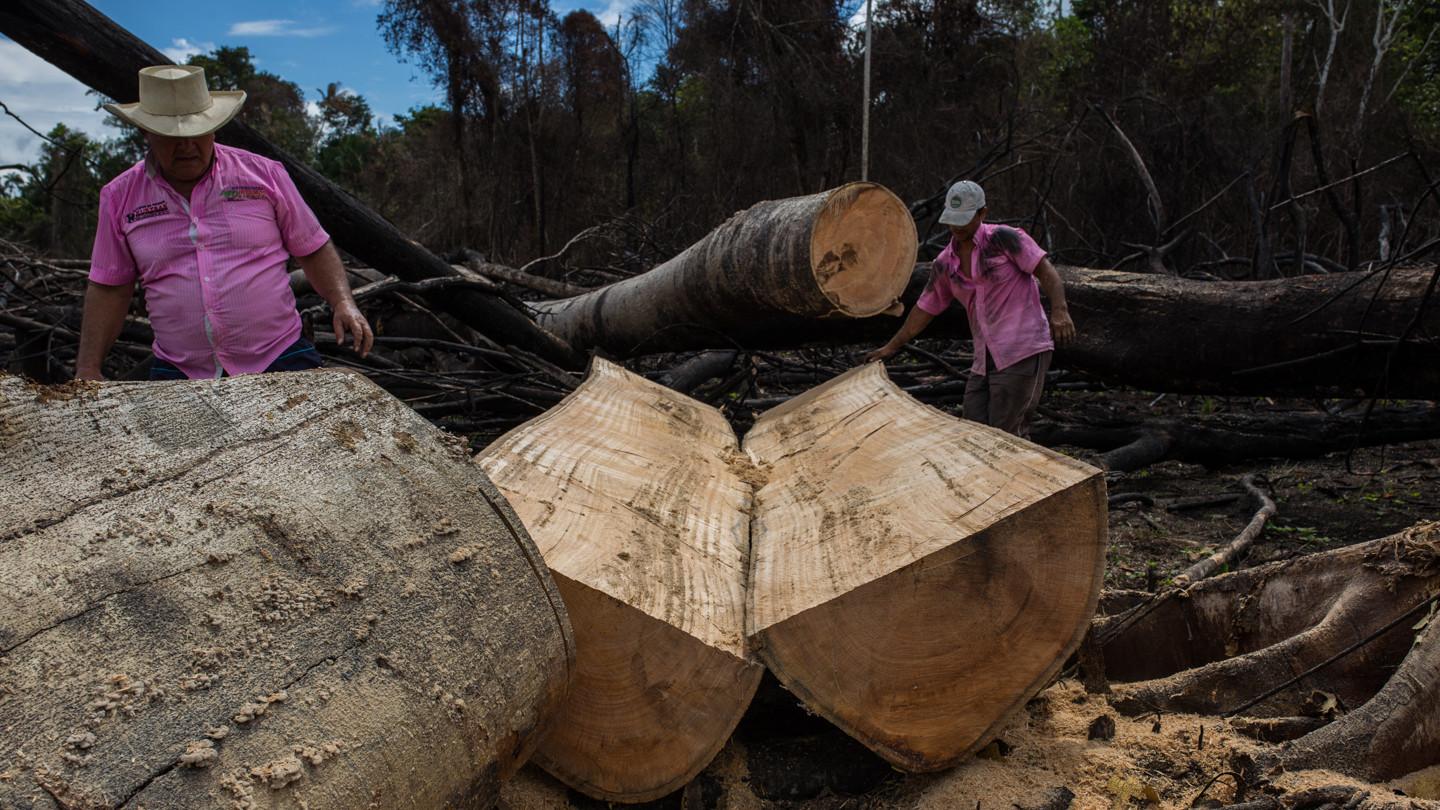In the Colombian Amazon, peace has environmental consequences
Far from stores, government assistance or any other comfort or service, rural inhabitants of the Amazonian frontier are experts in sourcing materials from their surroundings. Here, a large tree in a recently burned area is prepared to be cut into planks which will be used to repair the settlement’s one-room schoolhouse, where children from kindergarten to high school study together with a single teacher. The leftist guerrillas of the FARC thrived for decades in communities like this one, located far beyond the reaches of the Colombian state.
Acrid yellow smoke billows from the smoldering remains of a once-untouched forest, filtering into the fragmented canopy nearby. Though clouds in the distance look like rain, it might be weeks before burning season in the Colombian Amazon is over.
In 2016, after more than half a century of civil war that left some 220,000 dead and more than 7 million displaced, a peace agreement was reached between the Revolutionary Armed Forces of Colombia (FARC) and the Colombian state. The end of what was once the Western Hemisphere’s longest-running armed conflict is assumed to be an outcome broadly beneficial to society, but for the environment it has proven to be a double-edged sword.
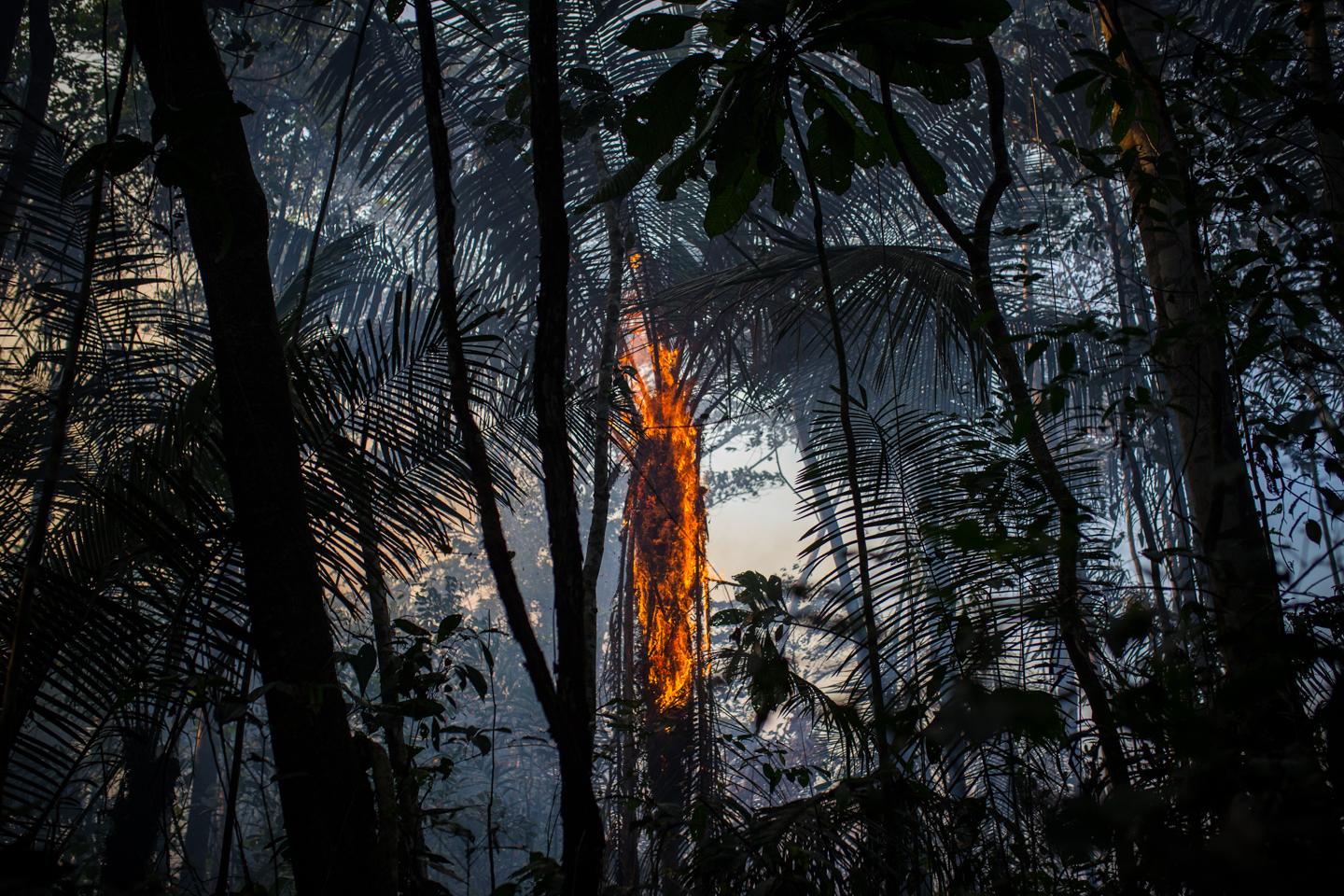
For decades, the Colombian Amazon — a region that makes up nearly half of the country’s territory — was virtually blocked off to human encroachment and development by the presence of the leftist guerrillas of the FARC, who long depended on the shelter provided by the region’s thick, largely uninhabited forests.
Although the FARC contributed to significant environmental damages over the years by blowing up oil and gas pipelines and supporting the widespread cultivation of illicit crops, in many cases they were the only mechanism in place for regulating land use in the far-flung regions under their control.
In the year following the implementation of the 2016 peace accords, the rate of deforestation in Colombia rose by 44 percent — a dramatic increase attributed to the FARC’s disarmament and withdrawal from isolated areas of the country which, even today, have yet to be consolidated by the Colombian state. The power vacuum opened in the FARC’s absence has led to widespread degradation in some of the country’s most ecologically important — and in many cases, still unexplored — areas.
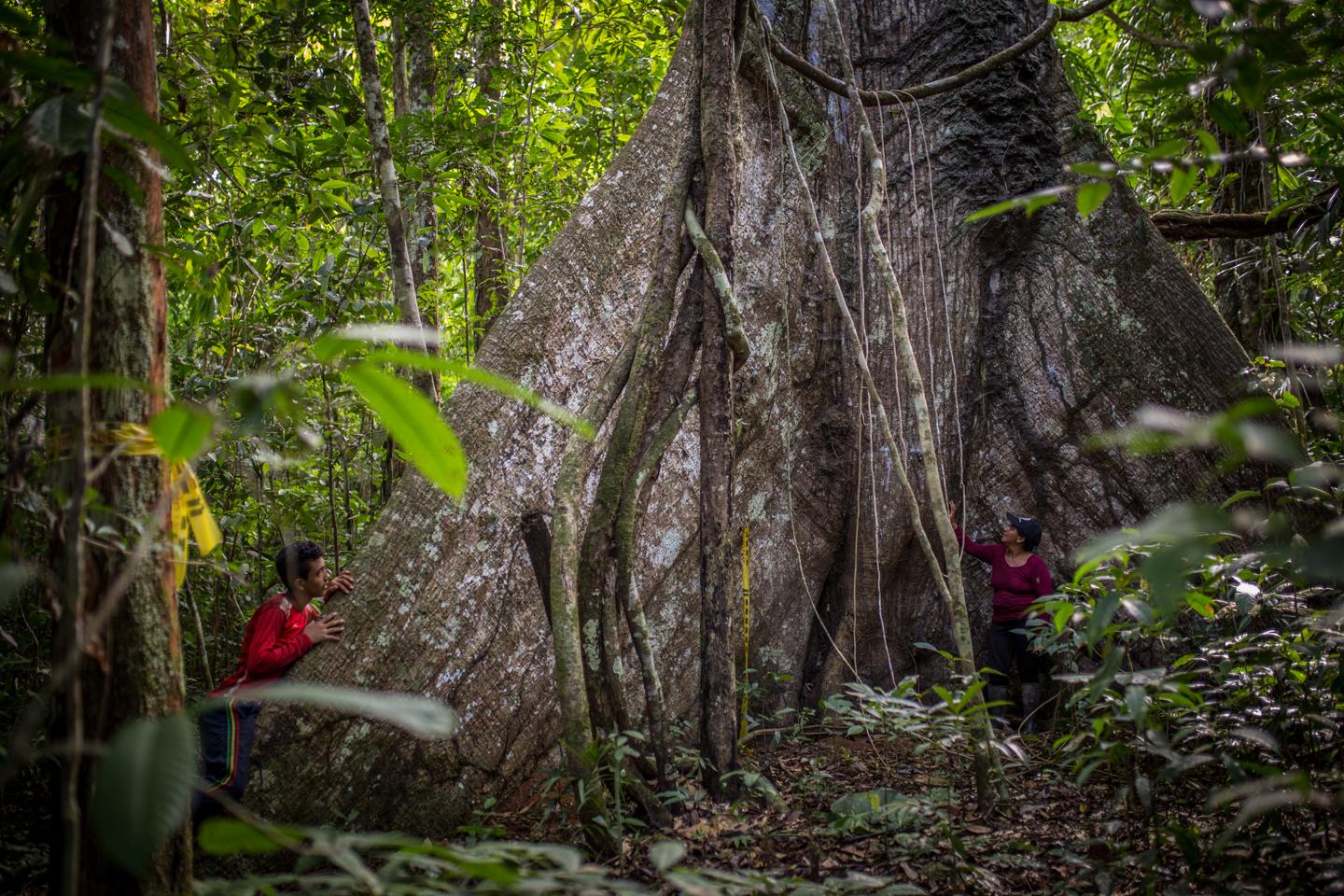
The Amazonian department of Caquetá was long considered a FARC stronghold and was a main stage for years of violent combat between leftist guerrillas, far-right paramilitaries and the Colombian armed forces. Today, the department has become the epicenter of Colombia’s post-conflict environmental crisis, accounting for nearly 40% of the country’s newly deforested areas, despite the fact that the department makes up only 12% of the country’s total area.
Across much of Caquetá, the FARC rebels were the only “government” inhabitants had ever known. Daily life and interactions between guerrillas and rural communities were long dictated by “cohabitation manuals,” which stipulated everything from how domestic disputes should be settled to the establishment of environmental policies.
“The FARC maintained rules regarding the amount of forest the campesinoscould clear every year, which was usually limited to around five hectares,” says Farit Murcia, a community leader in the village of Santa Fé del Caguán, located along the banks of the muddy Caguán River in the department of Caquetá.
“Over the years, the FARC tried to teach the campesinos things like the importance of taking care of the forest, and why we shouldn’t clear vegetation around sources of water. They enforced limits on activities like hunting and fishing, and established a huge forest reserve nearby,” says Murcia. “They drew a line and said, ‘No one can disturb the forest on the other side of this line,’ and everyone respected that. Anyone who disobeyed would be made to pay fines or was punished. This type of environmentalism that the FARC enforced was not particularly popular among the campesinos, but it was effective.”
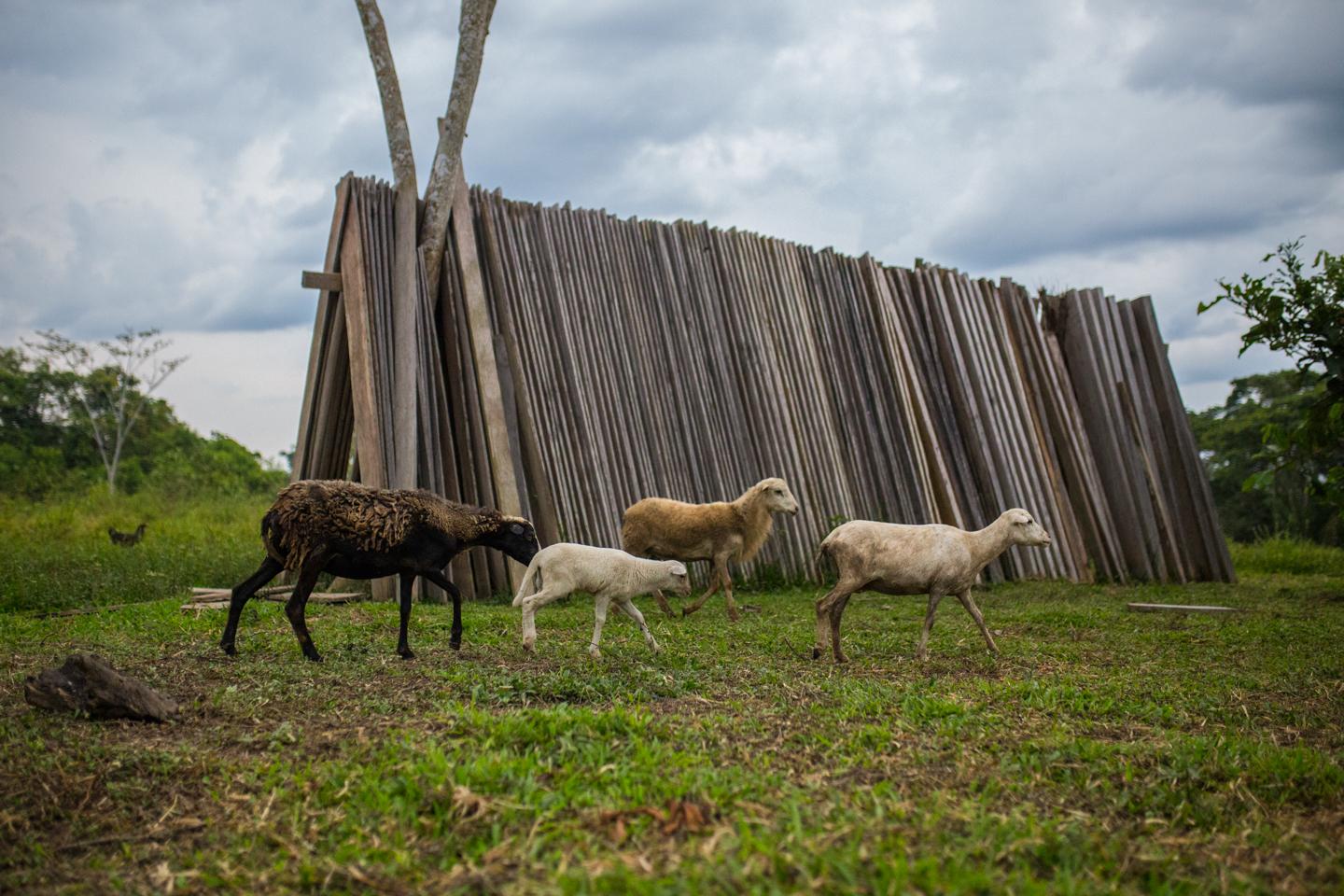
Like virtually every other Amazonian nation, cattle ranching is the region’s most important economic activity. In this case, it is the main driver of deforestation, as farmers who have long been prohibited by the FARC from expanding production into forested areas seize the moment to clear land before talk of legal repercussions become more than just far-fetched rumors.
A cattle rancher himself, Murcia recognizes the extent of the damage this industry wreaks on the environment. But even after a lifetime of altering the landscape, he insists that the levels of destruction occurring in the region around him since the withdrawal of the FARC are like nothing he’s ever seen. He is one of the few community leaders in the region who has been moved to action, traveling on his own expense to the department’s capital city to file complaints with Corpoamazonia, the regional environmental authority.
“Whatever environmental benefits the FARC produced during their years in this region have been totally erased,” says Murcia, shaking his head as he surveys a broad expanse of felled trees that a neighbor had clear-cut days before. “A few days ago, this was virgin forest.”
The plot of land we are looking at is approximately twelve hectares, roughly the size of 22 American football fields. While it appears devastatingly large from our perspective, it seems almost trivial compared to what is occurring in the deeper, more inaccessible reaches of the forest.
What many don’t often realize, Farit explains, is that large-scale deforestation is an expensive undertaking, one that is economically out of reach for the average campesino in the region.
“I’ve been notified of areas of more than 200 and 300 hectares that are being clear-cut in one fell swoop, in what used to be the forest reserve protected by the FARC,” he says, gesturing towards an expanse of forest that disappears into the horizon. “Now, let’s calculate how much that might cost. Aside from the chainsaws, extra blades, fuel, grass seed, and the cost of labor, you’re going to need food and supplies to last you and your crew for at least a month, and horses to haul all of that into the forest. This type of project will probably cost several thousand dollars. Tell me, do you think any of these poor campesinos around here have that kind of money?”
While one can hardly blame the small-scale farmer who hopes to increase his productivity after years in the crossfire of the armed conflict, the small plots of deforested land add up quickly.
Nevertheless, perhaps the most significant losses incurred during this ongoing wave of deforestation are produced by crews of workers hired by mysterious “sponsors” to blaze trails into untouched reaches of forest, where pristine jungles are cleared, burned, and later planted with grass, often several hundred hectares at a time.
When I ask who could be responsible, Farit shrugs. The only thing he knows is that the sponsors are “wealthy individuals from out of town.”
It doesn’t come as a surprise that these “sponsors” remain in the shadows. Across this vast, isolated territory, anonymity is a benefit closely associated with the region’s difficult access and harsh conditions, making it ideal for the proliferation of organized crime and illicit activities. The region’s geography plays a main role. The vastness and isolation of these areas prevented the Colombian state from ever really establishing itself there, and in their absence, clandestine organizations such as armed groups (like the FARC) and big cocaine cartels have been able to develop their respective activities without having to worry about the police or any sort of authority — put simply, these clandestine organizations became the authority.
In addition to the lingering presence of FARC dissidents who rejected or abandoned the peace process, the Amazon has increasingly come under control by different organized criminal bands, known in Colombia as BACRIM (Bandas Criminales Emergentes, or Emerging Criminal Groups), which are often descended from former right-wing paramilitary groups that went through their own (highly criticized) process of demobilization nearly fifteen years ago. In many areas, authorities believe these groups are responsible for driving deforestation in order to open illegal mining operations, increase land used for coca cultivation and to widen areas used for narcotrafficking routes.
Colombia has stepped up its defenses against this wave of deforestation through the creation of special units of the armed forces, police and prosecutors, but progress is slow. Environmental regulatory agencies, such as Corpoamazonia, which is responsible for the departments of Caquetá, Putumayo and Amazonas, are underfunded, understaffed and, according to Territorial Director of Caquetá, Mario Barón, unprepared to respond to the boom in environmental devastation that is being “oxygenated” by the post-conflict era.
In Caquetá, a department measuring more than 88,000 square kilometers, Corpoamazonia has a mere 35 employees, the majority of whom are confined to pushing papers in an office built, ironically, with beautiful, richly colored Amazonian wood.
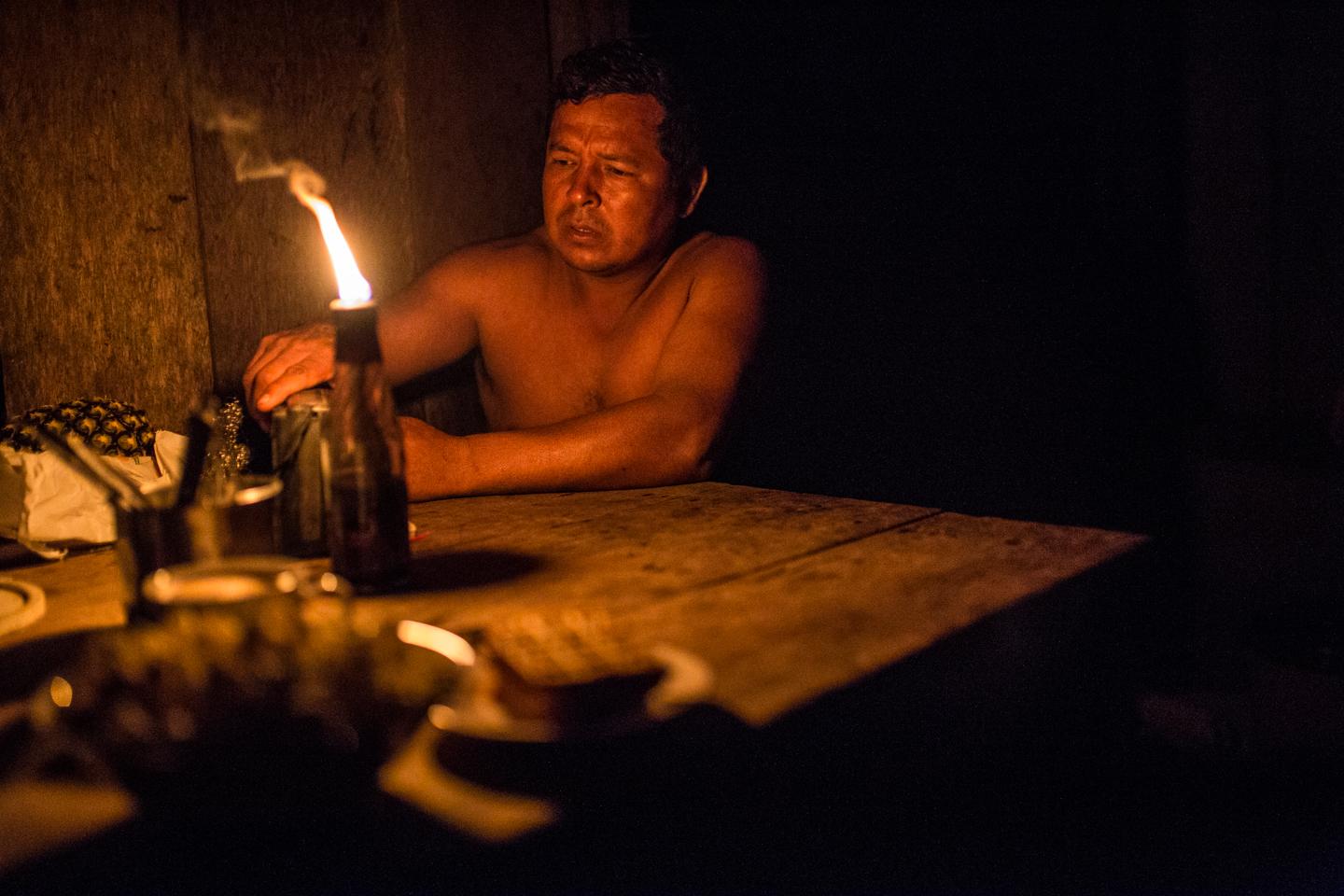
In addition to its vast reserves of natural resources and extensive unexplored ecosystems, the Colombian Amazon is home to numerous indigenous groups, including the Nukak Maku, one of the last nomadic hunter-gatherer groups in South America, who are being gradually choked out of their territory by ongoing deforestation in the nearby Guaviare department. Within the past few months, deforestation hot spots have extended to within 25 kilometers of the bounds of Chiribiquete National Park, the largest stretch of undisturbed, unexplored area in the country, which is also believed to be home to several uncontacted indigenous tribes still living in isolation.
This is bad news for regional biologists like Alexander Velásquez, director of the Center of Investigation for the Biodiversity of the Andean Amazon (INBIANAM) in Florencia, Caquetá. Decades of armed conflict have long limited the ability of scientists to study the country’s ecosystems, reflected in the fact that Colombia, which is considered to be the second-most biodiverse country in the world, has just 4.9 million records in the Global Biodiversity Information Facility, while Costa Rica — which is 22 times smaller than Colombia and rates 17th in biodiversity — has nearly 8.4 million records.
For years, Velásquez and other biologists have prepared themselves for the promised “environmental dividends” of peace. But today he’s forced to watch as many areas he had hoped to study are decimated before his eyes.
“I would say that all of the important natural zones in this region of the country have come under threat due to this new wave of deforestation,” says Velásquez. “We can’t even begin to quantify the amount of biological richness we have lost so far, because no one has ever taken inventories of these areas.”
Despite the situation’s urgency, many conservationists worry that the race to study and preserve natural areas is losing out to the drive for development and the exploitation of natural resources.
“Without real knowledge of this region’s biodiversity and ecosystem services, we’re bound to commit enormously profound errors. It is of utmost importance that we study all forms of biodiversity — including the cultural diversity of this region’s indigenous inhabitants —in order to truly determine the potential impacts of future social and economic development in this region.” Though land restitution is a main pillar of the 2016 peace accords, some are worried that a lack in rigorous land use planning will cause secondary booms in deforestation in environmentally sensitive areas as millions of displaced Colombians return to convert long-abandoned areas into productive agricultural land.
The improved security situation also signifies the start of new conflicts, in which nascent ecotourism industries and concerned communities are pitted against oil and gas companies seeking to begin long-awaited extractive projects in areas like Caquetá. While the Colombian government depends on these projects in order to finance the implementation of the peace accords, tensions continue to rise as communities take matters of protecting priceless ecosystems into their own hands by refusing entrance to employees of extractive industries and launching massive public resistance movements in opposition to the presence of these companies in their territories.
